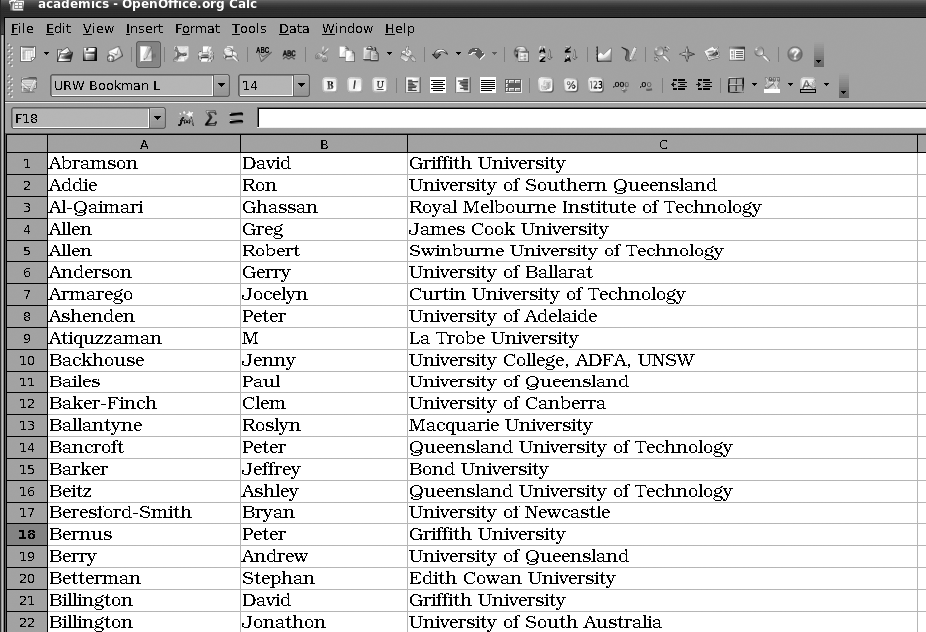Loading Data from Comma-Delimited Files
Databases are sometimes an afterthought. In fact, a staggeringly large amount of time spent by IT professionals is devoted to reformatting data from one application to suit another. It’s very common, for example, to store data using a spreadsheet program such as Microsoft Excel or OpenOffice Calc, only to realize later—when you’re swamped with data—that a relational database would have been a better choice. Most spreadsheet programs allow you to export data as rows of comma-separated values (CSV), often also referred to as comma-delimited format (CDF). You can then import the data with a little effort into MySQL.
If you need to import large numbers of spreadsheet files, you could use the xls2csv script (http://search.cpan.org/~ken/xls2csv) to automate the conversion from the Excel spreadsheet files to text files of comma-separated values.
If you’re not using a spreadsheet program, you can still often
use tools such as sed and awk to convert text data into a CSV format
suitable for import by MySQL. This section shows you the basics of how
to import CSV data into MySQL.

Figure 8-1. List of Australian academics stored in a spreadsheet file
Let’s work through an example. We have a list of Australian academics with their university affiliation that we want to store in a database. At present, it’s stored in a spreadsheet workbook file named academics.xls ...
Get Learning MySQL now with the O’Reilly learning platform.
O’Reilly members experience books, live events, courses curated by job role, and more from O’Reilly and nearly 200 top publishers.

